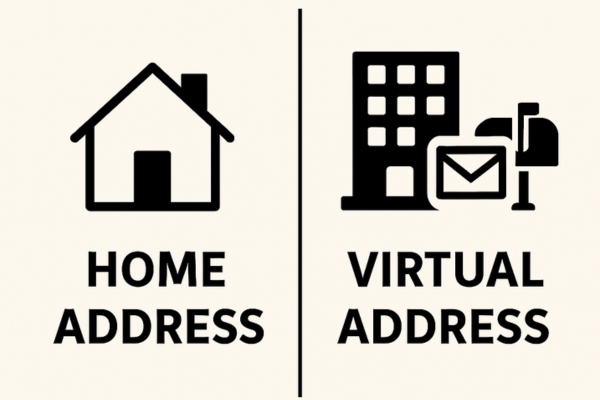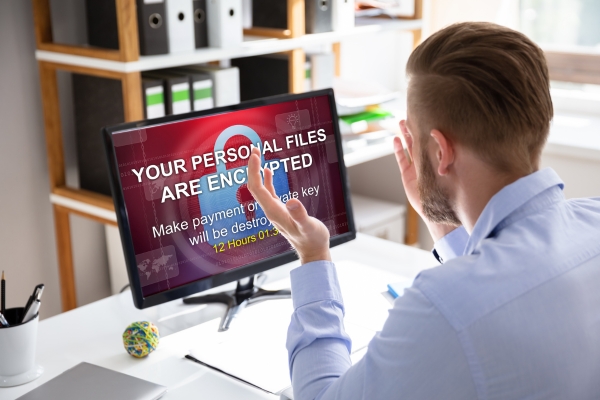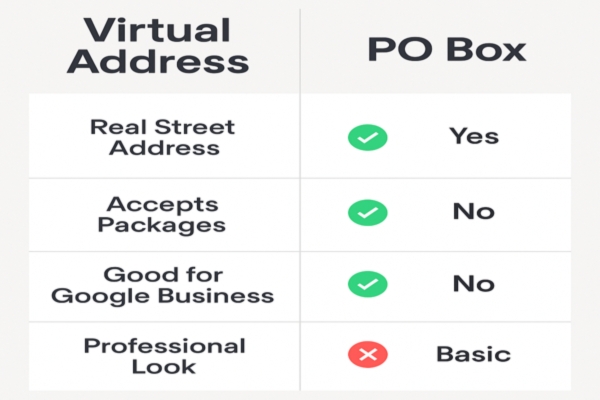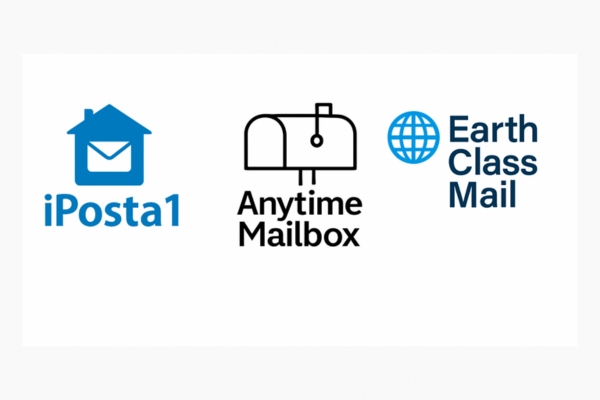Virtual business address—three words you probably didn’t expect to Google when you decided to start a blog, freelance officially, or launch that online shop.
But then comes the question:
“What address should I use for my business?”
And yeah… sharing your actual home address with strangers online? Not exactly ideal.
That’s where a virtual business address comes in. In this guide, I’ll break it all down for you—no complicated terms, no tech headaches. Just simple, step-by-step help from someone who’s been there.
What Is a Virtual Business Address?

A virtual business address is a real street address that you can use for your business—even if you never step foot in the building. It’s not just a fancy PO Box. It looks legit, works for legal purposes, and your mail can be scanned or forwarded to you online.
You can use it to:
- Register your business or LLC
- Receive mail and packages
- Use on invoices, newsletters, or your blog’s About page
- Keep your home address private
Think of it as your business’s official front door—without the rent.
Why Not Just Use Your Home Address?

You can—but here’s why most people don’t:
- It goes public: The moment you register an LLC or launch a website, that address is out there for anyone to find—yep, even random internet strangers.
- Professionalism: A random home address doesn’t give the best first impression.
- Legal and zoning issues: In some places, you’re not even allowed to run certain types of businesses from a residential address.
Bottom line? A virtual business address gives you peace of mind and a more polished look.
Virtual Address vs PO Box (Quick Breakdown)

| Feature | Virtual Business Address | PO Box |
| Real Street Address | Yes | No |
| Accepts Packages | Yes | Sometimes |
| Professional Look | Strong | Basic |
Before we dive into the steps, let’s make this real for a second:
Let’s say you’re a freelance writer building your brand on Substack. You’re sending invoices, setting up an email list, maybe even applying for gigs. Instead of dropping your condo address on everything, you get a virtual business address in New York.
It looks clean, professional, and instantly makes your brand feel more established—even if you’re writing from your couch in Australia.
Trying to avoid using your home address for a local business? Google generally doesn’t like PO Boxes or Virtual Mailboxes so you’re better off to set your local business up as a service area business and opt to keep your home address hidden.
How to Get a Virtual Business Address (Step-by-Step)
Let’s make this easy. Here’s exactly what to do:
Step 1: Decide What You Need
Before signing up for anything, get clear on why you need a virtual business address. Ask yourself:
- Are you forming an LLC and need a physical address for registration?
- Are you a freelancer or blogger wanting to look more professional?
- Do you expect packages and need mail forwarding?
- Do you need to manage multiple businesses or receive mail under different names?
If you’re just starting out, go for a basic plan with scanning. You can always upgrade later if you need package forwarding or more features.
Step 2: Choose a Provider

There are plenty of virtual address providers, but not all are created equal. Some popular and reliable ones include:
- iPostal1 – Offers easy global coverage
- Anytime Mailbox – Affordable entry-level option
- Bizee – Great if you’re needing other business services
Look for a provider that:
- Offers a real street address (not a PO Box)
- Has locations in your state, especially if you’re registering an LLC
- Has great customer reviews and easy-to-use apps or dashboards
- Supports package handling and forwarding if needed
- Provides secure mail storage and scanning options
Some services even let you pick an address in a fancy downtown location—great for branding!
Step 3: Sign Up for a Plan
Most providers offer multiple plans starting around $9 to $50/month, depending on the features. Consider:
- Mail scanning: Digital copies of your mail, so you can read it from anywhere
- Mail/package forwarding: If you need physical mail sent to you
- Multiple recipients: Useful if you have more than one business or partner
- Storage duration: Some plans offer longer free storage for physical items
Take time to compare features. Some plans include free app access or online notary services—those perks add up.
Step 4: Fill Out USPS Form 1583
To legally allow your provider to receive mail for you, the USPS requires a Form 1583.
Here’s how to handle it:
- Provide two forms of ID (e.g., passport, driver’s license, utility bill)
- Complete the form online or print and fill it out
- Get it notarized (many providers offer virtual notarization, which is super convenient)
Important: Make sure the form is filled out correctly, or your address won’t be activated.
Step 5: Start Using It!
Once your address is verified and live, you’re good to go. You can now:
- Use it to register your LLC
- Add it to your website, email footer, invoices, or business cards
- Set it as your return address on packages or email newsletters (helps with CAN-SPAM compliance)
That’s it—you’ve got a professional address without renting an office.
If you’re planning on getting a virtual mailbox to start an LLC consider providers that can help with LLC formation as well, like Bizee.
When Should You Get One?
Consider a virtual business address if:
- You’re starting a blog and want to look more established
- You’re forming an LLC or official business
- You send email newsletters (CAN-SPAM law requires a physical address)
- You want to keep your business stuff separate from your personal space
Even if your business is small or new, having a dedicated address gives you a major trust boost.
Why a Virtual Business Address Is Worth It (Even for Small Businesses)
Setting up a virtual business address might seem like a small detail, but it has a big impact on how your brand is perceived—and how protected you feel as a business owner. Whether you’re just starting a blog, freelancing, or building your ecommerce empire, this one step adds a layer of professionalism that helps you stand out.
It keeps your real-life location off the radar, ensures you meet legal requirements, and gives your business a more established, trustworthy feel. And the best part? You can get it done without leaving your house. No office lease, no stress.
So even if you’re running everything from your kitchen table, a virtual business address helps you show up like a pro—confident, credible, and ready to grow.
Frequently Asked Questions

Yes! As long as it’s a commercial address and you complete USPS Form 1583.
Yes, but choose a provider with real suite numbers, not shared spaces or drop-off boxes.
Between $9–$50/month depending on location and features.
Definitely. Many business owners do this to avoid listing their home address.
Yes, just check if your plan allows multiple business names or recipients.



